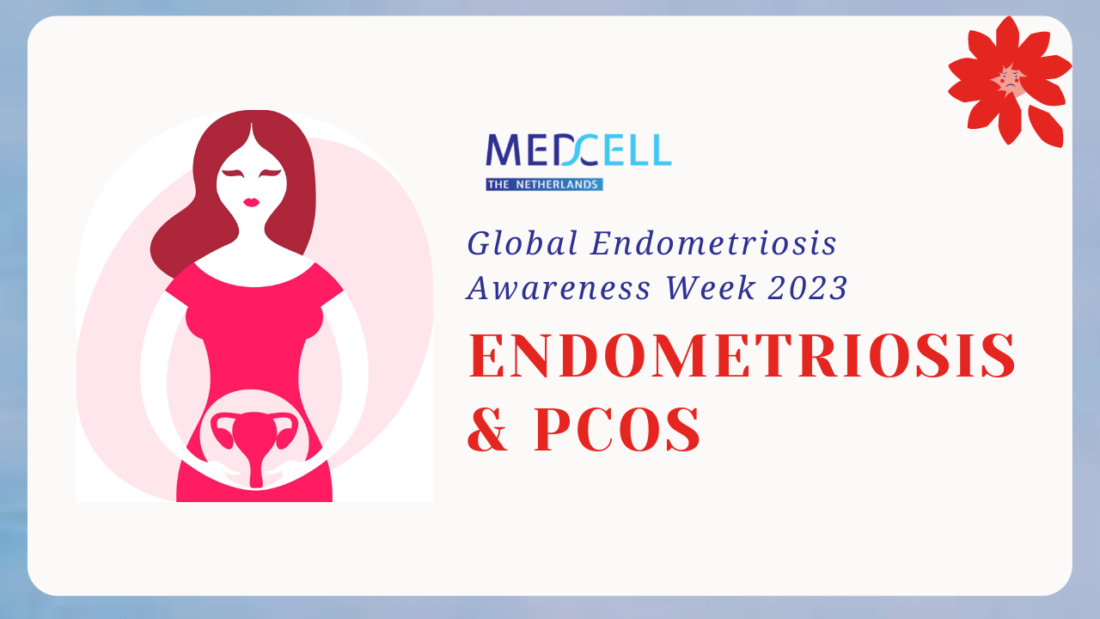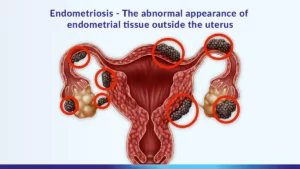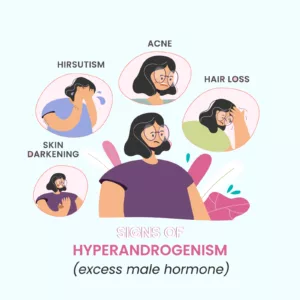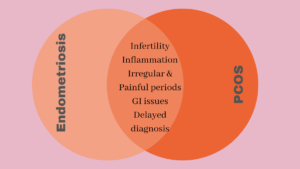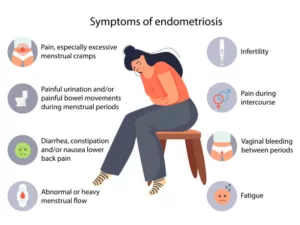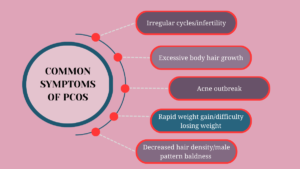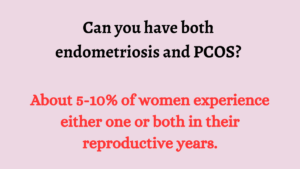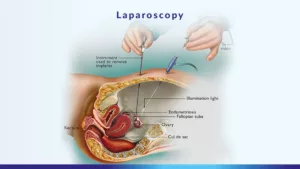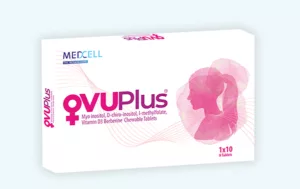Endometriosis and PCOS
In honour of Global Endometriosis Awareness Week 2023, Medcell Pharma will present one unique topic related to endometriosis throughout the week. Today’s focus is on endometriosis and PCOS.
What is endometriosis?
Endometriosis is a medical condition seen in birthing people where the tissue that resembles the uterus’ lining is discovered outside the uterus (endometrium). Endometriosis may be present in:
- Peritoneum (the lining of the pelvic and abdomen),
- In or on the fallopian tubes,
- On, behind, or around the womb,
- In the region between the vagina and the rectum,
- On the bladder and intestine,
- Or on the ovaries, where it can form cysts.
Such abnormal growth of endometrial tissue disturbs nearby structures, resulting in pain and adhesions (scar tissue) on the internal body parts it touches. The aberrant tissue that develops outside the uterus in an endometriosis patient behaves similarly. Before ovulation, it becomes thicker, and during menstruation, it swells and leaks into places it shouldn’t.
What is PCOS?
Polycystic ovary syndrome (PCOS) is a condition that occurs in women of reproductive age who have a hormonal imbalance. Women with PCOS have periods that are infrequent or last longer than they should. Because of hormonal imbalances, women with PCOS often have an abundance of androgens in their bodies.
Both men and women produce androgens (male hormone), but an excess of androgen in women causes:
- Acne
- Changes in female body structure
- Reduction in breast size
- Increased body hair on the face, chin, and abdomen (called hirsutism)
- Absence of menses (amenorrhea)
- Oily skin
In PCOS, many small fluid sacs (known as cysts) develop along the outer edge of the ovary. An immature egg within the cyst fails to release a normal egg, leading to the failure of regular menstrual cycles without fertilization. PCOS affects women of all ages but is most commonly seen in women aged 15 to 45. PCOS is said to affect 4-20% of women worldwide.
What are the main symptoms of endometriosis and PCOS?
Both endometriosis and PCOS cause infertility in women, but the causes of infertility are quite different. Another confusing similarity is that multiple symptoms of endometriosis and PCOS often overlap.
Some distinct symptoms of endometriosis are:
- Severe pain during menstruation or intercourse
- Painful menstrual cramps that may radiate to the abdomen (stomach) or lower back
- Unable to conceive naturally
- Flatulence or bloating(endo belly)
- Painful urination
- Frequent urinary tract infections (UTIs)
- Painful bowel movements
- Constipation
- Diarrhoea
- Nausea during menstruation
- Incredible fatigue
Some common symptoms of PCOS are:
- Irregular or a very short period with very light bleeding
- Enlarged ovaries due to fluid-filled cysts
- Excessive hair growth on the face and hands
- Decreased hair density and increased baldness
- Acne breakouts
- Obesity
- Pain in the pelvic area
- Malaise (discomfort)
- Unable to conceive naturally
- Additional skin patches on the neck and armpits
- Sudden hyperpigmentation of the skin on the neck, armpits, and/or under the breasts (scientifically known as acanthosis nigricans)
Can you have both endometriosis and PCOS?
Both endometriosis and PCOS are comorbid diseases (diseases that often exist with one another). Although it is not very common, it is not very rare either.
In fact, a 2015 study discovered that endometriosis diagnoses are more common in women with PCOS. Another study conducted in 2014 found a significant association between endometriosis and PCOS and pelvic pain and/or difficulty getting pregnant. An earlier 2011 study found that PCOS may indirectly raise estradiol due to the high levels of androgens and insulin. Endometriosis risk may rise as a result of this.
Treatment options for endometriosis and PCOS
For those who have endometriosis or PCOS, medications, surgery, and lifestyle modifications can reduce their symptoms and enhance their quality of life.
How to Treat Endometriosis
Pain management is frequently a focus of endometriosis treatment. Yet, it’s also crucial to take the person’s desire for pregnancy into account.
- Nonsteroidal anti-inflammatory medicines (NSAIDs) are the first medications used to reduce inflammation and relieve pain. Pain and inflammation can be reduced with the aid of hormonal drugs like dienogest, estradiol, norethindrone acetate, as well as non-hormonal drugs like aromatase inhibitors.
- Surgery: To treat the endometriosis symptoms, the uterus, fallopian tubes, and ovaries may need to be removed. Moreover, it might be possible to remove endometrial tissue from additional organs, such as the colon or bladder.
- Lifestyle: A study indicated that reducing gluten and dairy intake, increasing the consumption of fresh fruits and vegetables, and cooking with all-natural ingredients helped endometrial symptoms.
- Other studies that have been cited in support of this one have shown that leading a healthy lifestyle can lessen the physical and mental effects of endometriosis.
How to Treat PCOS
- Medication: Oral contraceptives and antiandrogens help lower androgen levels and ease PCOS symptoms.
- Changes in lifestyle are the primary method of treating PCOS. A normal menstrual cycle might result from losing 5% to 7% of body weight, increasing the likelihood of becoming pregnant.
Medcell Pharma introduces OVU PLUS – A novel strength for PCOS management. OVU PLUS is clinically proven in PCOS-Obese & Lean, PCOS-associated infertility and unexplained infertility.
One of the ingredients in OVU PLUS is Myo-inositol (MI) and D-chiro inositol with the ration of 3.6:1 that is proven to provide 3 times more pregnancy rate and 4 times more live birth rates.OVU PLUS helps increase insulin sensitivity, decreases hyper androgenism and improves the menstrual cycle. Another key ingredient in our chewable tablets is Berberine. One of the berberine’s greatest benefits, according to a 2014 assessment, is that it delivers a “harmonious distribution” into a number of bodily areas. The berberine supplement naturally offers a number of health advantages, but it is praised in particular for its capacity to decrease cholesterol and blood sugar. Moreover, it is said to aid in treating diabetes, acne, obesity, cholesterol, and depression.
Summary
Although being distinct female wellness disorders, endometriosis and PCOS are both chronic and challenging to treat.
When endometrial tissue leaves the uterus and harms other organs, endometriosis develops. PCOS manifests as numerous ovarian cysts along with unusually increased levels of androgen.
Infertility and masculine characteristics are side effects of PCOS.
PCOS and endometriosis are treated with drugs, surgery, and lifestyle modifications. Both conditions are not totally curable, the symptoms can only be managed.


